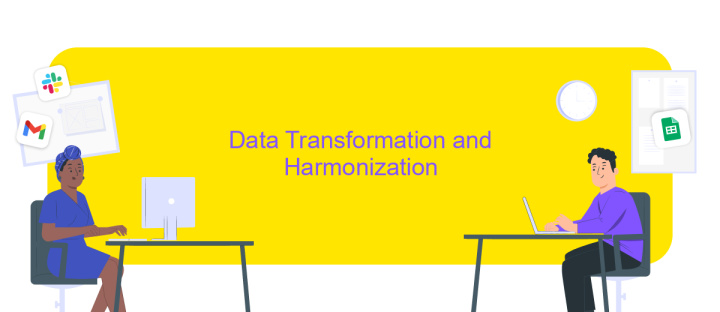Data Integration Checklist
In today's data-driven world, seamless data integration is crucial for organizations to harness the full potential of their information assets. This checklist provides a comprehensive guide to ensure that your data integration processes are efficient, reliable, and scalable. Whether you're merging data from multiple sources or migrating to a new system, these essential steps will help you achieve successful integration.
Data Discovery and Profiling
Data discovery and profiling are crucial steps in the data integration process. These activities help identify data sources, understand data structures, and assess data quality. By performing data discovery and profiling, organizations can gain insights into the completeness, accuracy, and consistency of their data, which are essential for successful integration.
- Identify all relevant data sources.
- Understand data formats and structures.
- Assess data quality and completeness.
- Analyze data consistency and accuracy.
- Document metadata and data lineage.
Effective data discovery and profiling ensure that data integration efforts are based on a solid understanding of the available data. This process helps mitigate risks associated with data quality issues and enables more informed decision-making. By thoroughly profiling data before integration, organizations can streamline their workflows and achieve more reliable and accurate results.
Data Integration Design

Effective data integration design begins with a thorough understanding of the data sources, their formats, and the specific requirements of the target system. It's essential to map out the data flow meticulously, ensuring that all transformations and validations are clearly defined. This step involves identifying potential data inconsistencies and planning for their resolution. Additionally, it's crucial to establish robust data governance policies to maintain data quality and integrity throughout the integration process.
Leveraging specialized tools like ApiX-Drive can significantly streamline the data integration process. ApiX-Drive offers a user-friendly interface for configuring integrations between various platforms without the need for extensive coding. This service supports a wide range of applications, making it easier to automate data transfers and synchronize information across systems. By utilizing such tools, organizations can reduce the complexity of their data integration projects, ensure real-time data updates, and enhance overall operational efficiency.
Data Transformation and Harmonization

Data transformation and harmonization are critical steps in the data integration process. These steps ensure that data from various sources are converted into a consistent format, making it easier to analyze and draw meaningful insights. Without proper transformation and harmonization, data can be inconsistent, leading to inaccurate conclusions and decisions.
- Identify and assess the data sources to understand the structure and format of the incoming data.
- Standardize data formats to ensure compatibility across different systems and applications.
- Cleanse data to remove duplicates, correct errors, and handle missing values.
- Map data fields to a common schema to facilitate seamless integration.
- Apply transformation rules to convert data into the desired format and structure.
- Validate transformed data to ensure accuracy and consistency.
By following these steps, organizations can achieve a unified view of their data, enabling better decision-making and more effective data analysis. Proper data transformation and harmonization not only improve data quality but also enhance the overall efficiency of data integration efforts.
Data Quality and Governance

Ensuring data quality and governance is a critical aspect of any data integration project. High-quality data is essential for making accurate decisions, while robust governance ensures compliance and security. This dual focus helps organizations maintain trust in their data assets and optimize their use.
Data quality involves various dimensions such as accuracy, completeness, consistency, and timeliness. Governance, on the other hand, encompasses policies, procedures, and standards that manage data integrity and security. Both are crucial for the success of data integration.
- Implement data validation rules to check for accuracy and completeness.
- Establish data stewardship roles to oversee data quality and governance.
- Utilize data profiling tools to assess data consistency and identify anomalies.
- Develop a data governance framework outlining policies and procedures.
- Monitor data quality metrics regularly to ensure continuous improvement.
By focusing on data quality and governance, organizations can ensure that their integrated data is reliable and secure. This not only supports better decision-making but also enhances compliance with regulatory requirements, thereby safeguarding the organization's reputation.


Data Integration Testing and Validation
Effective data integration testing and validation are crucial to ensure the accuracy and reliability of the integrated data. Begin by defining clear testing objectives and criteria, focusing on data completeness, accuracy, and consistency. Develop a comprehensive testing plan that includes unit tests, integration tests, and end-to-end tests. Utilize automated testing tools to streamline the process and ensure repeatability. Additionally, conduct thorough validation by comparing the integrated data with the original data sources to identify discrepancies and rectify them promptly.
To facilitate seamless data integration testing, consider leveraging tools like ApiX-Drive, which offers robust features for automating data workflows and integrations. ApiX-Drive can help you set up and monitor data flows between various systems, ensuring data integrity throughout the process. By using such services, you can reduce manual efforts, minimize errors, and enhance the overall efficiency of your data integration strategy. Regularly review and update your testing and validation processes to adapt to evolving data sources and integration requirements.
FAQ
What is Data Integration?
Why is Data Integration important?
What are some common challenges in Data Integration?
How can I automate Data Integration processes?
What should be included in a Data Integration Checklist?
Time is the most valuable resource in today's business realities. By eliminating the routine from work processes, you will get more opportunities to implement the most daring plans and ideas. Choose – you can continue to waste time, money and nerves on inefficient solutions, or you can use ApiX-Drive, automating work processes and achieving results with minimal investment of money, effort and human resources.

